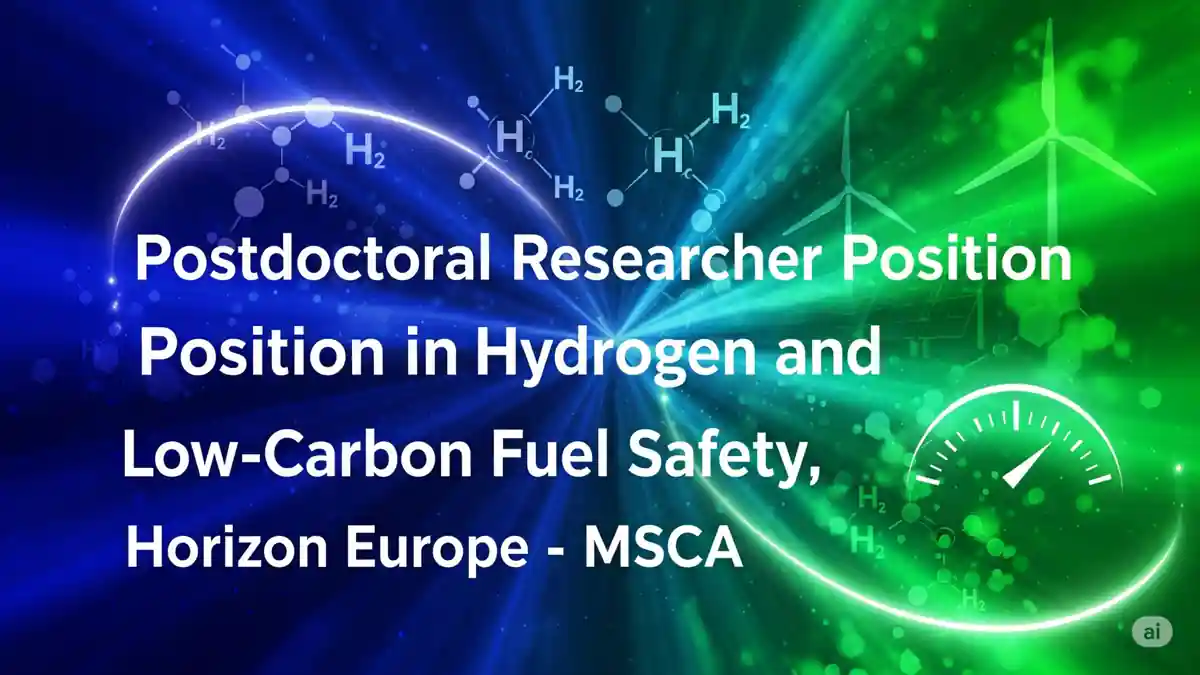NASA GESTAR II Research Opportunity: Atmospheric Aerosols, Satellite Data, and Air Quality Forecasting at GSFC
The Goddard Earth Sciences Technology and Research II (GESTAR II) program, administered by the University of Maryland, Baltimore County (UMBC), is currently offering an advanced research position in atmospheric aerosols and satellite-based air quality forecasting. Hosted at NASA Goddard Space Flight Center (GSFC), this role is designed for candidates with specialized expertise in atmospheric science, remote sensing, and machine learning. It represents a significant opportunity for early-career and mid-career researchers aiming to contribute to high-impact environmental monitoring and predictive modeling projects.
Join NASA’s cutting-edge air quality research at GSFC through the GESTAR II program. Work with satellite data, machine learning, and aerosol modeling to forecast pollution events and support environmental policy. This is a rare opportunity to contribute to global climate science and public health from a premier research institution.
Program Overview
Program Name
Research Position: Atmospheric Aerosols, Satellite Data, Air Quality Monitoring and Forecasting – NASA GESTAR II at GSFC
Host Country / Region
United States / NASA Goddard Space Flight Center, Maryland
Funded By
style="text-align: justify;">University of Maryland, Baltimore County (UMBC) in collaboration with NASA GSFC
Duration
Full-time position; duration is open-ended based on project performance and funding availability.
Study Mode
On-site (NASA GSFC campus); may involve hybrid work arrangements depending on project phase.
Key Responsibilities
This research role is focused on leveraging satellite observations and machine learning methodologies to improve air quality forecasting models. The appointed candidate will:
Develop and enhance aerosol remote sensing techniques using multi-sensor satellite data, including MODIS, VIIRS, TROPOMI, and CALIPSO.
Integrate advanced machine learning algorithms with atmospheric modeling tools to improve the accuracy of pollution forecasts.
Perform comparative assessments between remote sensing outputs and in-situ ground-based measurements.
Contribute to the validation and refinement of chemical transport models (e.g., GEOS-Chem, NAAPS, CMAQ).
Support the transition of research algorithms into operational forecasting systems.
This work directly contributes to NASA’s strategic goals of improving Earth system understanding and supporting public health and environmental policy through robust air quality intelligence.
Eligibility Criteria
To be considered for the position, applicants must meet the following qualifications:
Hold a Ph.D. in atmospheric sciences, earth sciences, environmental science, remote sensing, or a closely related field.
Demonstrate proven research experience in aerosol retrieval or air quality modeling, with a strong peer-reviewed publication record.
Proficient in handling large satellite datasets and programming in Python, MATLAB, R, or IDL.
Able to work independently and collaboratively in a research-intensive environment.
Committed to open science practices and interdisciplinary collaboration.
Application Process
Submission Instructions
Interested candidates should submit the following materials via email:
Cover Letter
Curriculum Vitae (CV)
Complete List of Publications
Three-Page Research Statement outlining current expertise, future goals, and alignment with NASA GESTAR II objectives
Email Address
Applications must be sent to [email protected] with the email subject line: “Task 173: Researcher Position”
Recommendation Letters
Three letters of recommendation will be requested for shortlisted candidates. Referees should be prepared to comment on the applicant’s research capabilities, work ethic, and collaborative potential.
Deadline
Primary Review Deadline: July 18, 2025
Extended Consideration: Applications will be accepted on a rolling basis until the position is filled
Areas of Research Specialization
The researcher will work across the following domains:
Utilize data from MODIS, VIIRS, MISR, and other satellite instruments to monitor aerosol properties such as optical depth, type, and distribution.
Machine Learning in Earth Sciences
Apply deep learning models, regression techniques, and data assimilation to enhance predictive capability in real-time air quality forecasting.
Air Quality Modeling
Evaluate and integrate atmospheric composition data into chemical transport models. Assess model performance through comparisons with ground-based sensors and airborne instruments.
Research-to-Operations Transition
Support NASA’s efforts to move cutting-edge research tools into practical operational use for governmental and public health stakeholders.
Tools and Technical Skills Required
Applicants are encouraged to demonstrate proficiency in the following:
Aerosol Optical Depth (AOD) retrieval algorithms
Statistical modeling and uncertainty quantification
Experience with GRASP or similar aerosol retrieval frameworks
Familiarity with global and regional atmospheric transport models
Cloud-based or high-performance computing environments (HPC, AWS, NASA’s Discover)
Institutional Context
GESTAR II is a robust research consortium that supports over 120 scientists embedded within NASA GSFC. Researchers benefit from access to cutting-edge facilities, mentorship from NASA scientists, and the opportunity to contribute to high-priority NASA missions related to climate, weather, and
atmospheric composition.Learn more about the GESTAR II framework and research culture at https://gestar2.umbc.edu.
Career Development and Impact
This role offers a unique opportunity for researchers to:
Co-author publications in high-impact journals
Present at leading conferences including AGU, EGU, and AMS
Contribute directly to federal air quality and climate policy initiatives
Mentor students and engage in interdisciplinary team science
Review Timeline and Article Update Schedule
To ensure accuracy and ongoing relevance, this article should be reviewed and updated on a biannual basis, ideally in January and July, to reflect changes in the application deadline, research focus, or institutional updates.
Citations
European Geosciences Union Jobs Portal: https://www.egu.eu/jobs/
NASA Earth Sciences at GSFC: https://science.gsfc.nasa.gov/earth/
Summary and Call to Action
This research opportunity with NASA GESTAR II at GSFC represents a prestigious and impactful career pathway for scientists dedicated to advancing the frontiers of aerosol monitoring and air quality forecasting. Researchers who meet the qualifications and are driven by scientific excellence, interdisciplinary collaboration, and public service are encouraged to apply promptly. For full consideration, ensure your application is submitted by July 18, 2025.
| Feature | Details |
|---|
| Program Name | Research Position in Atmospheric Aerosols, Satellite Data, and Air Quality Forecasting – NASA GESTAR II at GSFC |
| Host Country / Region | United States / NASA Goddard Space Flight Center (GSFC), Maryland |
| Funded By | University of Maryland, Baltimore County (UMBC) in partnership with NASA |
| Duration | Full-time; open-ended based on funding and performance |
| Study Mode | On-site (with potential hybrid arrangements) |
| Eligibility | PhD in atmospheric sciences, earth sciences, remote sensing, or related fields |
| Financial Support | Competitive salary, research support, access to NASA GSFC facilities |
| Fields of Study | Atmospheric Science, Remote Sensing, Machine Learning, Environmental Science |
| Application Deadline | 07/18/2025 (priority); open until filled |
| Official Website | Click Here |
FAQs
What is the NASA GESTAR II research position about?It focuses on aerosol remote sensing and satellite-based air quality forecasting using machine learning at NASA GSFC.
Who can apply for the NASA GESTAR II air quality job?Applicants must hold a PhD in atmospheric science, remote sensing, or a related Earth science discipline.
Is the GESTAR II job fully remote or hybrid?The role is primarily on-site at NASA GSFC, but hybrid flexibility may be available depending on project needs.
What is the expected outcome of this NASA research?The goal is to improve air quality forecasting accuracy and inform public health and environmental policies.










